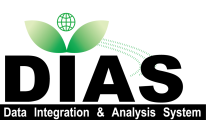 Annual expected damage cost and maximum water depth of flood with 250m resolution in Japan by SI-CAT
Annual expected damage cost and maximum water depth of flood with 250m resolution in Japan by SI-CAT
| Name | Annual expected damage cost and maximum water depth of flood with 250m resolution in Japan by SI-CAT |
| Edition | Ver2.0 |
| Metadata Identifier | SICAT_Japan_Flood20230727102321-DIAS20221121113753-en |
| Name | So Kazama |
|---|---|
| Organization | Graduate School of Engineering, Tohoku University |
| so.kazama.d3@tohoku.ac.jp |
| Name | So Kazama |
|---|---|
| Organization | Graduate School of Engineering, Tohoku University |
| so.kazama.d3@tohoku.ac.jp |
| Name | So Kazama |
|---|---|
| Organization | Graduate School of Engineering, Tohoku University |
| so.kazama.d3@tohoku.ac.jp |
| Name | Hayata Yanagihara |
|---|---|
| Organization | Graduate School of Engineering, Tohoku University |
| yanagihara.hayata.r1@dc.tohoku.ac.jp |
This dataset contains the annual expected damage cost and maximum water depth of flood estimated with 250m resolution in Japan. The coverage period is the current climate (1981-2000) and the late 21st century climate (2081-2100). In the calculation of water depth, it is assumed that the percentage of the protection level to the finished flood-control structure in the national river plan is 50% on each river. Two RCP scenarios (RCP2.6 and RCP8.5) and five GCMs (CSIRO-Mk3-6-0, GFDL-CM3, HadGEM2-ES, MIROC5, MRI-CGCM3) were used in the analysis of the late 21st century climate. For details of the analysis method, please see Yamamoto et al. (2021). In Ver2.0 (released on Nov.1, 2021), the following points were updated and changed from Yamamoto et al. (2021).
1. Damage rates by water depth for damage to residential buildings and damage to depreciable assets and inventory assets at business establishments were updated to values in the 2020 edition of the Manual for Economic Evaluation of Flood Control Investment (Draft).
2. The river sections to be considered for flood-control structures were changed to class A river (directly managed segment), class A river (designated segment), and class B river.
Yamamoto et al. (2021) do not refer to the method for calculating the annual expected maximum water depth, but it is determined by the same method as the annual expected damage cost.
| North bound latitude | 46 |
| West bound longitude | 128 |
| Eastbound longitude | 147 |
| South bound latitude | 27.333333 |
| Dimension Name | Dimension Size (slice number of the dimension) | Resolution Unit |
|---|---|---|
| row | 8960 | 0.002083333 (deg) |
| column | 6080 | 0.003125 (deg) |
| Keyword Type | Keyword | Keyword thesaurus Name |
|---|---|---|
| theme | Human Dimensions > Natural Hazards > Floods | GCMD_science |
| theme | Disasters | GEOSS |
| place | Asia > Eastern Asia > Japan | Country |
-
File download : https://data.diasjp.net/dl/storages/filelist/dataset:622
The file name of the annual expected damage cost is “AED_Coverage period_RCP Scenario_GCM name_v2.bil” and the file name of the annual expected maximum water depth is “ExpectedDepth_Coverage period_RCP scenario_GCM name_v2.bil”. “Coverage period” in the file name is “current” in the case of the current climate and “2100” in the case of the late 21st century climate. “RCP scenario” in the file name is “26” in the case of RCP2.6 and “85” in the case of RCP8.5. “GCM name” in the file name is the abbreviation of the GCM name (CSIRO-Mk3-6-0: CS, GFDL-CM3: GF, HadGEM2-ES: Ha, MIROC5: MI, MRI-CGCM3: MR). There are 22 files, about 207 MB per file. The header file (HDR_FILE.hdr), which is necessary to extract the file on the GIS, is also downloaded.
1. The contents of this dataset must not be redistributed without permission.
2. The dataset creator is not responsible for any loss or damage caused by the use of this dataset.
3. If you want to use this dataset, please inform us of your purpose of use and affiliation.
If data provider does not have data policy, DIAS Terms of Service (https://diasjp.net/en/terms/) and DIAS Privacy Policy (https://diasjp.net/en/privacy/) apply.
If there is a conflict between DIAS Terms of Service and data provider's policy, the data provider's policy shall prevail.
Data of flood damage cost / maximum flood water depth was developed by SI-CAT (Yamamoto et al., 2021).
If you plan to use this dataset for a conference presentation, paper, journal article, or report etc., please include acknowledgments referred to following examples. If the data provider describes examples of acknowledgments, include them as well.
" In this study, [Name of Dataset] provided by [Name of Data Provider] was utilized. This dataset was also collected and provided under the Data Integration and Analysis System (DIAS), which was developed and operated by a project supported by the Ministry of Education, Culture, Sports, Science and Technology. "
Yamamoto, T., Kazama, S., Touge, Y., Yanagihara, H., Tada, T., Yamashita T. and Takizawa, H.: Evaluation of flood damage reduction throughout Japan from adaptation measures taken under a range of emissions mitigation scenarios. Climatic Change 165, 60 (2021). https://doi.org/10.1007/s10584-021-03081-5